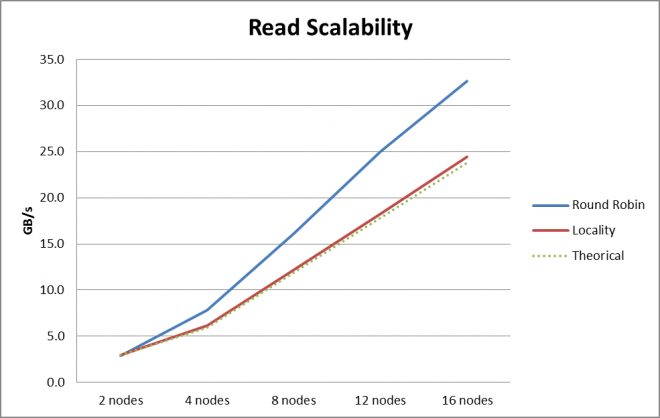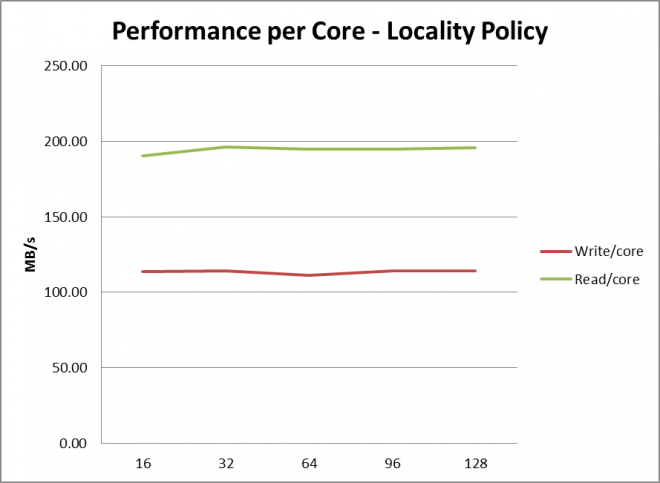- VOX
- Technical Blogs
- Availability
- Software Defined Storage Architecture Analyltics C...
Software Defined Storage Architecture Analyltics Computing - Revised
- Subscribe to RSS Feed
- Mark as New
- Mark as Read
- Bookmark
- Subscribe
- Printer Friendly Page
- Report Inappropriate Content
With InfoScale 7.1 customers can now experience greater scalability and achieve more performance while keeping the budget under control, not having to lock themselves into any specific hardware vendor. In an essence, get the benefits of a real Software Defined Storage solution.
In a previous paper we were defining how Software Defined Storage could be used to provide a storage and compute solution to serve high I/O demand analytics workloads like SAS Grid. The paper was using 8 commodity servers with local HDDs and was achieving linear scalability with up to 15GB/s for reads when using the 8 nodes.
As computing and capacities demand increases, now InfoScale 7.1 supports up to 64 nodes using the same architecture as previously described. Several enhancements have been included to provide a high performance and highly available architecture. As one example, Storage Access Layer simplifies now how storage is consumed and mapped to the hosts. Also, Multi-Volume File Systems simplifies the operation for these large clusters as building block units can be specified.
The result is that the new paper published here shows how performance continues the linear scalability when moving from 8 nodes to 16 nodes. In the previous architecture we had 15GB/s for reads with 8 nodes, and in this new architecture we have 32.6GBs when scaling to 16 nodes. Also we can observe how the round robin capabilities to spread I/O across all the servers provide a better than linear performance.

As discussed in the paper, one key metric for SAS Grid is the IO performance per available core. In this exercise we can also how this high performance demands are satisfied when the configuration is scaled from 2 to 16 nodes:

InfoScale Enterprise 7.1 provides real Software Defined Storage solution that is capable to get the best performance of all-flash arrays when using SAS Grid or from commodity architectures based on local storage as presented in the paper attached to this blog.
You must be a registered user to add a comment. If you've already registered, sign in. Otherwise, register and sign in.
- Understand, Plan and Rehearse Ransomware Resilience series - Strategy in Protection
- Managing hybrid multi-cloud environments with confidence in Availability
- Unlock, Fortify, and Optimize with Veritas at KubeCon 2021 in Veritas Events
- Life At Veritas Interview with Bhooshan Thakar: Learning is an Integral Part of Being an Engineer in Inside Veritas
- Optimizing cloud adoption: Unified deduplication with NetBackup MSDP Direct Cloud Tiering in Protection

